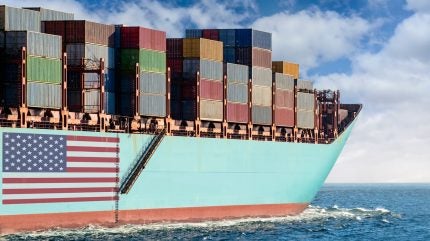
The 145% tariff on China announced by the Trump administration in April has triggered retailers to suspend or cancel orders; however, with the reduction of tariffs to 30% and a pause effective until 12 August, retailers have resumed importing.
Reciprocal tariffs on other nations are also on hold until 9 July amidst ongoing negotiations.

Discover B2B Marketing That Performs
Combine business intelligence and editorial excellence to reach engaged professionals across 36 leading media platforms.
NRF supply chain and customs policy vice president Jonathan Gold said: “Retailers had paused their purchases and imports previously because of the significantly high tariffs. They are now looking to get those orders and cargo moving in order to bring as much merchandise into the country as they can before the reciprocal tariff and additional China tariff pauses end in July and August.”
In April, before the tariff impacts were felt, US ports covered by Global Port Tracker processed 2.21 million twenty-foot equivalent units (TEU), marking a year-over-year increase of 9.6%.
Although May figures were not available at the time of reporting, projections indicate a decline due to the April tariffs, with an estimated 1.91 million TEU, which is down by 13.4% from April and down 8.1% year over year.
If the expected figures become a reality, it would mark the first YoY decline since September 2023 and the lowest volume since December 2023, when it recorded 1.87 million TEU.

US Tariffs are shifting - will you react or anticipate?
Don’t let policy changes catch you off guard. Stay proactive with real-time data and expert analysis.
By GlobalDataDespite some tariffs being paused, import numbers are predicted to rise this month, although the figure is still expected to be 6.2% lower than the previous year at 2.01 million TEU.
In July, imports are expected to reach 2.13 million TEU, a decrease of 8.1% and August imports are predicted to fall to 1.98 million TEU, representing a 14.7% decline.
Import volumes are projected to plummet dramatically for the rest of 2025, with significant annual declines partly because the latter part of 2024 experienced heightened import activity due to apprehensions regarding potential strikes at ports along the East Coast and Gulf Coast.
The projection for September is 1.78 million TEU, a 21.8% fall year over year, and October’s forecast is at 1.8 million TEU, a decrease of 19.8%.
The first half of 2025 is projected to reach 12.54 million TEU, which is an improvement from previous forecasts but still below pre-April tariff levels.
“Retailers want to ensure consumers will be able to find the products they need and want at prices they can afford. Unfortunately, there is still considerable uncertainty as to what will happen after the pauses end. We strongly encourage the administration to continue negotiating agreements with our trading partners in order to restore predictability and stability to the supply chain,” Gold added.https://www.just-style.com/features/us-apparel-imports-from-asia-accelerate-in-april-on-china-lag/





